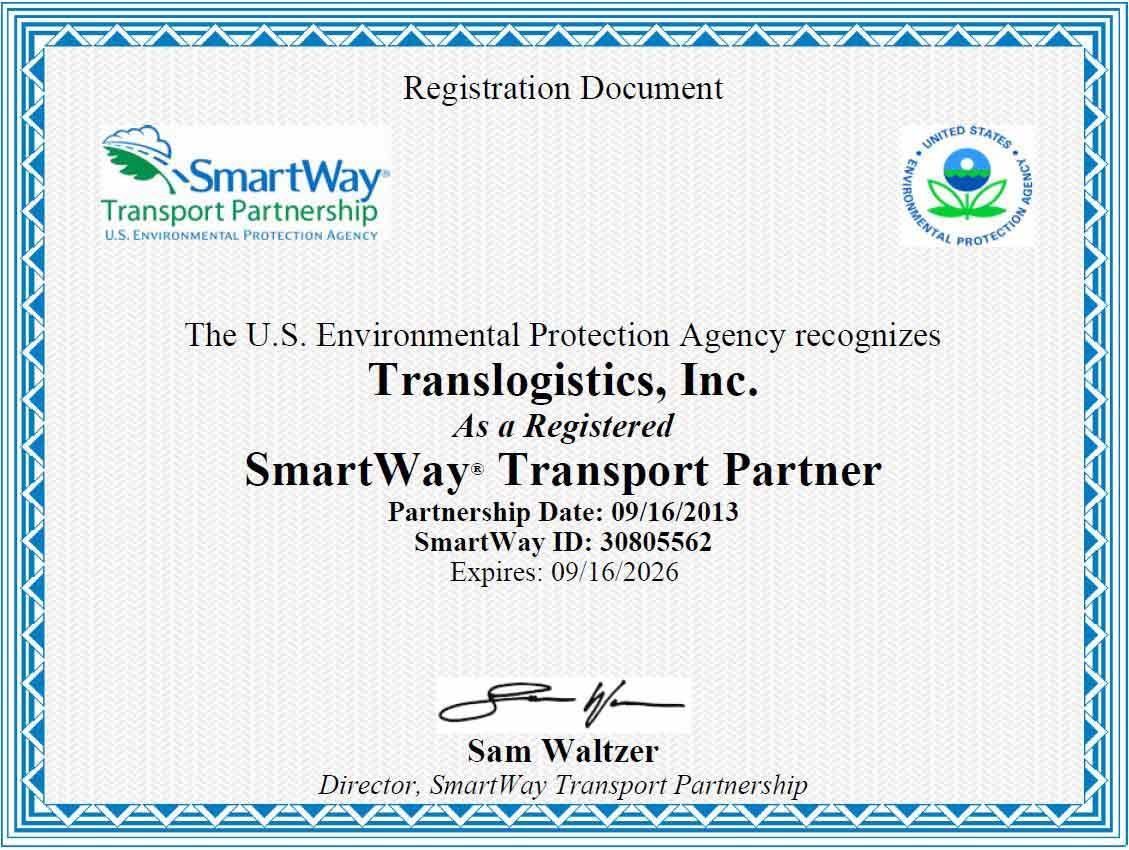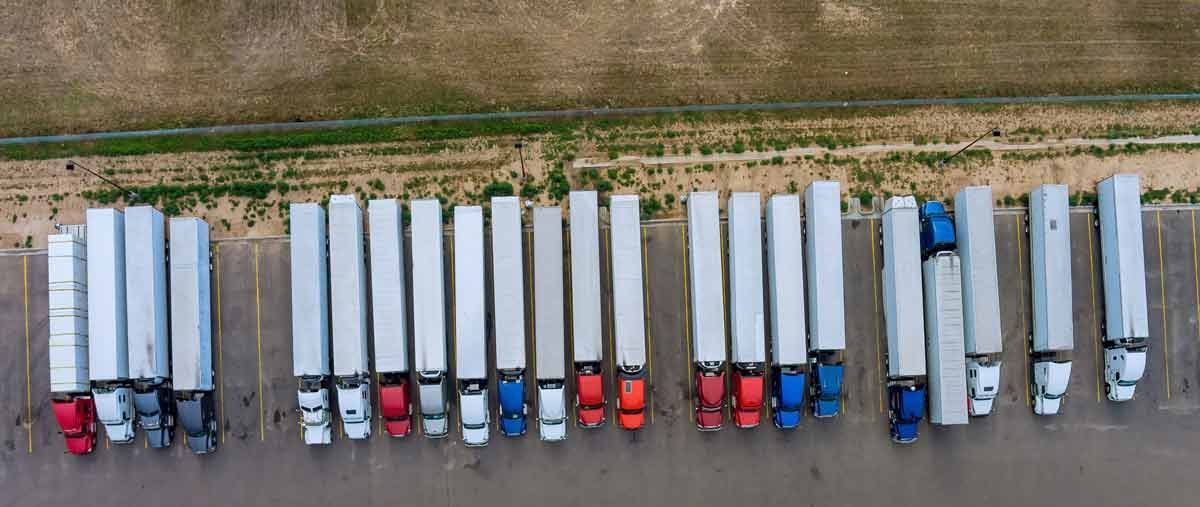Flatbed Trucking 101: Answering Your Top Questions
Discover the basics of flatbed trucking: weight limitations, & common accessorials in this comprehensive guide.
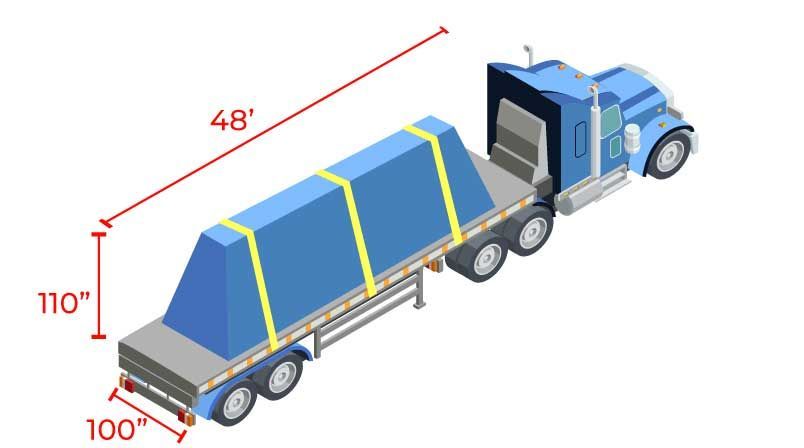
What is flatbed trucking?
Flatbed trucking is a method of transporting goods using a flatbed trailer that does not have a roof or sides. The trailer is attached to a tractor unit, and the goods are secured to the flatbed with tarps, straps, chains, or other devices to prevent them from shifting during transportation.
Flatbed FTL trucking is an excellent way to transport large, bulky items that cannot fit into a traditional box truck. However, like any transportation method, it has its pros and cons. In this article, we will explore the advantages and disadvantages of flatbed FTL trucking.
Flatbed trucking is commonly used for transporting large or oversized items, such as construction materials, machinery, or vehicles that cannot fit in a standard enclosed trailer. Flatbed trucking provides easy loading and unloading of goods from the sides or the top of the trailer, making it a versatile transportation method for a wide range of goods.
What is a flatbed vs regular truck?
A flatbed truck is a type of truck that has an open bed without any sides or roof, whereas a
regular truck typically has a fully enclosed cargo area with sides, a roof, and a rear door. Flatbed trucks are commonly used for transporting large, heavy, or oversized items that cannot fit inside a regular truck. The flatbed design allows for easy loading and unloading of goods from the sides or top of the trailer, and items can be secured to the bed using straps, chains, or other devices. Regular trucks, on the other hand, are commonly used for transporting general cargo, such as boxes or pallets, that need to be protected from the elements during transportation. Regular dry van trailers have a more limited loading and unloading capability, as items can only be accessed through the rear door of the cargo area.
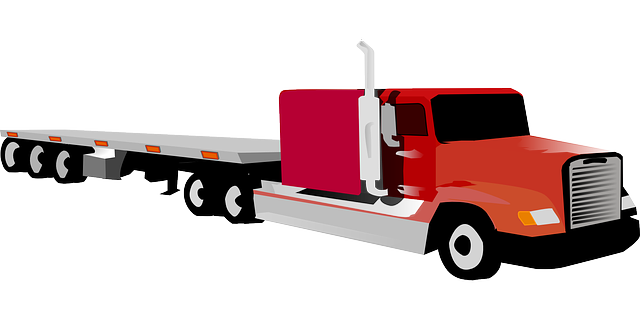
Pros of Flatbed FTL Trucking

Cons of Flatbed FTL Trucking
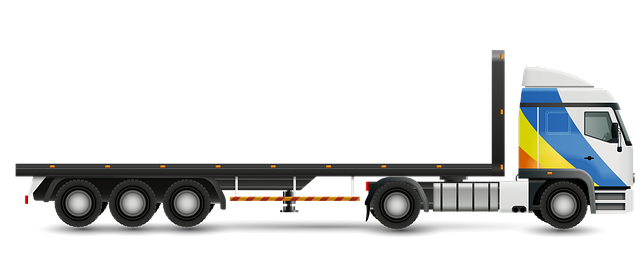
Why do people use flatbed instead of dry van trailers?
People use flatbed trailers instead of dry van trailers for a few different reasons:
1. Oversized or irregularly shaped items: Flatbed trailers are more suitable for carrying oversized or irregularly shaped items that cannot fit into a standard dry van trailer. This includes items such as heavy machinery, large pipes, or construction materials that are too big or heavy to fit through the doors of a dry van trailer.
2. Easy loading and unloading: Flatbed trailers offer easy loading and unloading of cargo, as items can be loaded from the sides or the top of the trailer. This is particularly useful for items that require special equipment to load or unload, such as cranes or forklifts.
3. Flexible and versatile: Flatbed trailers are versatile and can be used to transport a wide range of goods, including large and bulky items that would be difficult or impossible to transport using a dry van trailer.
4. Faster loading and unloading: With flatbed trailers, there is no need to load and unload cargo through a rear door, which can be time-consuming and difficult. Instead, cargo can be loaded and unloaded more quickly and efficiently from the sides or top of the trailer.
However, there are also some drawbacks to using flatbed trailers, such as the fact that cargo is exposed to the elements and needs to be secured properly to prevent damage or loss during transit. Flatbed trailers are also less secure than dry van trailers, as cargo is not enclosed and is more vulnerable to theft. Finally, flatbed trailers require specialized equipment and training to operate safely, which can be more expensive and time-consuming than using a dry van trailer.
How much weight can a flatbed hold?
The weight capacity of a flatbed trailer can vary depending on several factors, including the length of the trailer, the type of flatbed trailer, and the weight restrictions in the state or region where the trailer will be used.
In general, a standard flatbed trailer can carry up to 48,000 pounds of cargo, while heavy-duty flatbed trailers can carry up to 80,000 pounds or more. However, it's important to note that weight restrictions may apply depending on the type of cargo being transported and the axle configuration of the trailer.
It's also important to ensure that the cargo being transported does not exceed the weight limits set by the Department of Transportation (DOT) to ensure safe and legal transportation. Overloading a flatbed trailer can lead to dangerous road conditions, damage to the trailer, and legal penalties for the driver and the company involved.
What is the difference between a hotshot and a FTL Flatbed?
A hotshot truck is typically a smaller, more agile truck used for carrying time-sensitive, smaller loads. Hotshot trucking typically involves transporting goods that are too small or too urgent to be shipped by traditional FTL (full truckload) carriers. Hotshot trucks are typically 1-ton or 3/4-ton pickup trucks with a gooseneck or bumper pull trailer attached. They can be used to transport anything from small packages to larger items like heavy equipment or construction materials.
On the other hand, FTL flatbed trucking involves using a larger tractor-trailer unit with a flatbed trailer that is capable of carrying a full truckload of cargo. FTL flatbeds are commonly used for transporting large or oversized items, such as construction materials, machinery, or vehicles that cannot fit in a standard enclosed trailer. The flatbed design allows for easy loading and unloading of goods from the sides or top of the trailer, making it a versatile transportation method for a wide range of goods.
The main differences between hotshot and FTL flatbed trucking are the size of the trucks used and the type of cargo they are capable of transporting. Hotshot trucks are smaller and more agile, and are typically used for smaller, time-sensitive loads, while FTL flatbed trucks are larger and are used for transporting full truckloads of cargo, particularly large or oversized items that cannot fit in a standard enclosed trailer.

What are the dimensions of a Flatbed Trailer?
Flatbed truck dimensions can vary depending on the manufacturer and the specific model of the truck. However, here are some general dimensions for common types of flatbed trucks:
1. Standard flatbed truck: A standard flatbed truck is typically around 24 feet long, 8.5 feet wide, and 8 feet high. The flatbed itself is usually around 48 feet long, with a width of 8.5 feet.
2. Heavy-duty flatbed truck: Heavy-duty flatbed trucks can be larger than standard flatbed trucks, with lengths of up to 53 feet and widths of up to 102 inches (8.5 feet). The height of the truck will depend on the manufacturer and the specific model.
3. Step-deck flatbed truck: A step-deck flatbed truck has a lower deck height than a standard flatbed truck, making it more suitable for carrying taller loads. The height of a step-deck flatbed truck can vary, but it is typically around 10 to 11 feet high.
4. Lowboy flatbed truck: A lowboy flatbed truck has a very low deck height, making it ideal for transporting oversized or heavy loads. The height of a lowboy flatbed truck can vary, but it is typically around 1 to 2 feet off the ground.
It's important to note that weight restrictions may apply to flatbed trucks, and the dimensions of the cargo being transported will also affect the overall height and weight of the truck. It's important to check with the 3PL freight broker or consult with a transportation professional to determine the best flatbed truck size for a particular transportation job.
What are Flatbed Accessorials?
Flatbed truck accessorials are additional services or features that can be added to a flatbed truck to better suit the specific needs of the cargo being transported. Here are four examples of flatbed truck accessorials:
1. Tarps and straps: Flatbed trucks can be equipped with tarps and straps to protect the cargo from the elements during transit. Tarps can be customized to fit the size and shape of the cargo being transported, and straps can be used to secure the cargo in place to prevent shifting or damage.
2. Side kits: Side kits are panels that can be added to the sides of a flatbed truck to create an enclosed space for the cargo being transported. This is particularly useful for fragile or sensitive items that require extra protection from the elements.
3. Ramps and liftgates: Ramps and liftgates can be added to a flatbed truck to make it easier to load and unload heavy or bulky items. Ramps can be attached to the back of the truck to allow for easy loading and unloading of items, while liftgates can be installed on the sides of the truck to provide additional access points.
4. Load-leveling equipment: Load-leveling equipment, such as air-ride suspension or hydraulic systems, can be added to a flatbed truck to ensure that the cargo remains level and secure during transit. This is particularly important for delicate or sensitive items that could be damaged if they shift or move during transport.
Flatbed Trucking Summary
Flatbed FTL trucking is a versatile and cost-effective method of transportation for large, heavy, and oversized items. However, it has its limitations and requires additional measures to ensure the safety and security of the items being transported. Companies should consider the specific needs of their items and the transportation route before deciding on the best transportation method for their goods.
TLI Insights
Get the latest logistics insights and tips from TLI's award-winning team. Stay ahead in transportation planning.
Questions? Email us at marketing@shiptli.com


